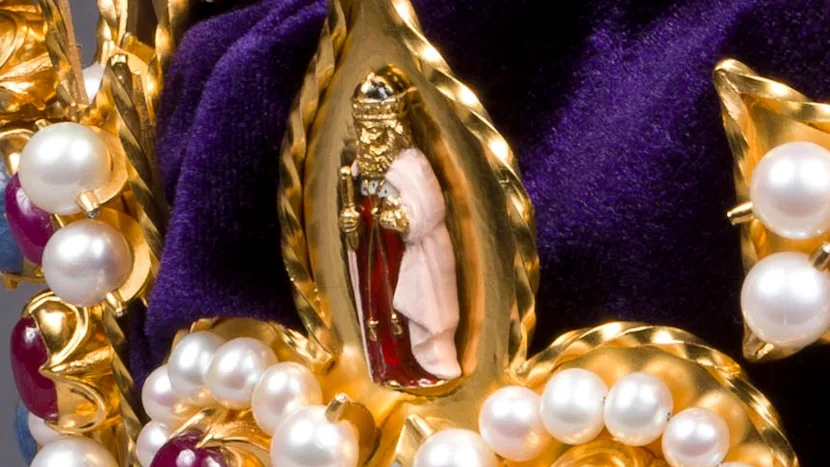Charles I was executed in 1649 after being convicted of treason, triggering the start of England’s decade of republicanism.The monarch is remembered for his lavish reputation and extravagant lifestyle but after his death, when Oliver Cromwell took over as the Lord Protector, some of the most symbolic pieces from his reign were thought to have been destroyed and lost forever. That was, until a metal detectorist, Kevin Duckett, discovered the gold figure of a king in a Northamptonshire field. It comes after Netflix has just released a widely popular film called 'The Dig', which retells the story of the 1939 excavation of Sutton Hoo, Suffolk.
The figure, discovered by Mr Duckett, is standing on an antelope, and his features are thought to represent Henry VI, the reigning monarch in 1422. It is believed to have once been part of Charles I’s state crown, which Parliament valued at £1,100 in 1649 — the gold was melted for coins and the jewels sold on. However, Mr Duckett went to Hampton Court earlier this year and was stunned to see a replica of his own gold king featuring in the displays about Charles I’s crown. The replicated crown was based on a portrait of Charles from 1631.
Specialist historian, Leanda de Lisle, exclusively told Express.co.uk that this artefact has an extensive royal history and is rich in symbolism. Henry VI, believed to be the figure found in Northamptonshire, is remembered for triggering the civil war later dubbed the Wars of the Roses. He was murdered after 50 years on the throne by his Yorkist opponent King Edward IV, but was later considered a saint in popular culture.
As Ms de Lisle explained: “First, people decided that while had been a bad king, he had been a good man, and declared him a saint. The base of the gold figure is marked SH — Saint Henry. Prayers to the king led to miracles and images of him appeared in churches and prayer books." Henry’s successor Edward attempted to suppress the cult that was emerging, worrying that it undermined his own reign, However, the movement was later utilised by Henry VII. To legitimise his claim to the throne, he declared that his holy uncle, Henry VI, had “prophesied his rule as divinely ordained”, according to Ms de Lisle. (Read more.)
From Smithsonian:
Standing just 2.5 inches tall, the statuette may have once formed the centerpiece of a dazzling Tudor crown. As historian Leanda de Lisle wrote on her website this past December, researchers had long thought that the diadem—worn by Henry VIII during processions marking the Feast of the Epiphany and by his five immediate successors during their respective coronations—was lost, its precious metals melted down to make coins and its jewels sold piecemeal following the fall of the British monarchy in 1649. But Duckett’s find is poised to upend this history, suggesting that the artifact, which depicts 15th-century king Henry VI, escaped the wrath of Oliver Cromwell’s anti-royalist Parliamentarians largely by chance.
Speaking with Tom Mack of local news outlet Leicestershire Live, Duckett points out that the field where he found the figurine is near the site of the Battle of Naseby, a June 1645 clash that ended in soon-to-be deposed king Charles I’s devastating defeat at the hands of Cromwell’s forces. The amateur treasure hunter theorizes that Charles, who was executed for treason four years later, in 1649, lost the statue while fleeing the battlefield. (Read more.)






:focal(384x171:385x172)/https://public-media.si-cdn.com/filer/53/b2/53b234a4-eb4a-45c1-99f8-7d416eebcbd0/crown.jpg)













No comments:
Post a Comment